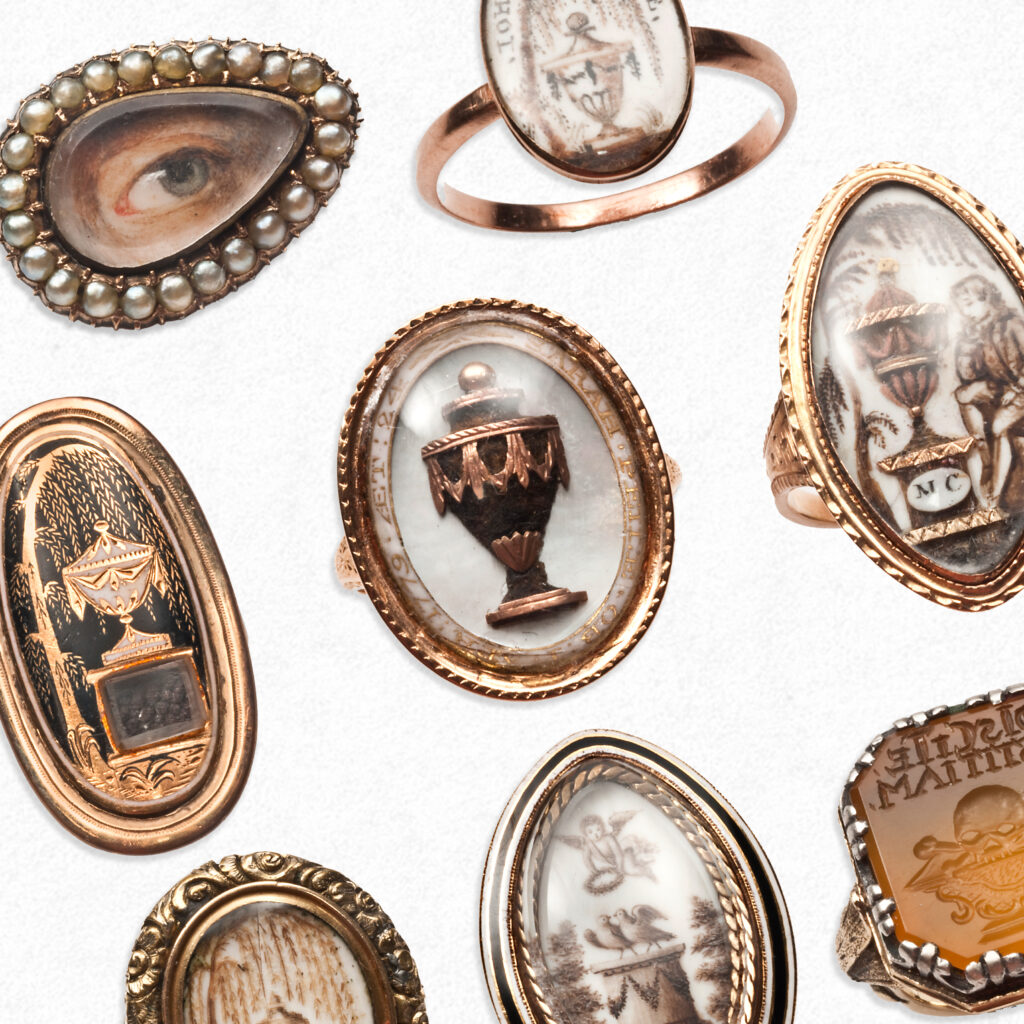Textiles: 17th Century, Part 1

As the primary mourning colour, black was adopted in the fourteenth century, where Planche notes that the earliest record of full black for mourning in England was in 1364, when Edward III put his court into black for John II of France.* From this time, the adoption of mourning costume was relegated to the aristocracy and those with Court connections. During the 18th century, social barriers began to decline with the entrance of new wealth and withdrawing of restrictions by the Court of Heralds. Mourning costume played a significant part in this new social mobility.
As the adjudicators of custom, the Courts of Heralds persecuted those who transgressed the lines of aristocratic mourning regulations and issued fines accordingly. At this time, the rising merchant class were trying to compete with the nobility in society, which equated to proving their status by following Court regulations in the closest manner.
The requirements of mourning put a tremendous strain on the household and this would only increase as years passed. In costume, reflective surfaces were not permitted, with a heavy reliance on dull and matte fabrics. Broadcloth, crape and paramatta were mandatory. The stages of mourning were also coming to prominence. First mourning, or full mourning required no jewellery or shiny surfaces. Only dull silk, crape and broadcloth were permitted. Second mourning dress was less severe and those that followed it carefully could change accessories to reflect the change. Half mourning stage required dull mauve, black and grey. Passive patterns and silk fabrics were allowed. Deep red survived as a mourning colour, but not among the fashionable. With regulations like these in mind, the household was expected to provide gowns, cloaks, scarves, headbands and gloves for the chief mourners and provide for the family servants afterwards. The less affluent couldn’t afford this necessity of the stages of mourning coupled with the funeral reliance, but it was demeaning to skimp. Due to this, servants’ dress was cheaper in price and quality. By the end of the century, Court Heralds lessened restrictions of mourning to upper classes, leading the middle classes to wear mourning costume as a symbol of social status. Court mourning was worn by those with direct Court connections, but General mourning was open to those who could afford it. This grew so much that by the 19th century, General mourning was worn by the working classes. Court etiquette remained largely constant across Europe.






